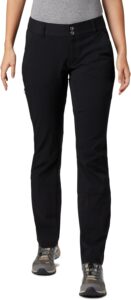Have you ever found yourself standing in the crisp winter air, feeling the chill seeping through your clothes? It’s one of those moments where having the right gear can make all the difference. A good winter hiking coat serves as your dependable shield against harsh weather, keeping you warm and comfortable while you enjoy the great outdoors.
Understanding the Importance of a Good Winter Hiking Coat
When you’re preparing for winter hikes, choosing the right coat isn’t just about style; it’s about functionality and protection. The right coat helps you maintain body heat, controls moisture, and allows for a comfortable range of motion. Let’s break down what makes a winter hiking coat indispensable.
Insulation
Insulation is crucial for staying warm during those frigid hikes. There are two primary types of insulation: down and synthetic.
- Down Insulation: This is made from the feathers of ducks or geese and provides excellent warmth-to-weight ratio. It’s incredibly compressible, meaning it can pack down small for easy carrying. However, it loses its insulating properties when wet, so you should pair it with a waterproof exterior or be cautious in wet conditions.
- Synthetic Insulation: This type mimics down but is made from polyester fibers. It performs better in wet conditions, retaining insulation even when damp. If you’re tackling unpredictable weather, synthetic insulation might be your best friend.
Waterproofing
Nothing spoils a hike like getting soaked from unexpected rain or snow. Look for jackets with waterproof or water-resistant materials. Here are some popular technologies:
- GORE-TEX: A well-known waterproof fabric that is breathable, allowing sweat to escape while keeping water out.
- HyVent: This is made by The North Face and offers similar protection with added breathability.
- eVent: Another high-performance waterproof fabric known for exceptional breathability.
Ensure that the coat’s seams are sealed, as these are often the weakest points for water penetration.
Breathability
Recognizing the difference between waterproof and breathable is essential. During physical exertion, your body generates heat and moisture. A breathable jacket allows this moisture to escape, preventing you from feeling clammy or cold. Look for coats with ventilation zippers or mesh-lined pockets to help with airflow.
Weight and Packability
When you’re out on the trails, the last thing you want is a heavy coat weighing you down. Lightweight winter coats can provide comfort without sacrificing warmth. Some coats compress into small packages, making them easy to stow in your backpack when not in use. Consider your hiking plans and how much weight you’re willing to carry.
Key Features to Look For
As you search for the perfect winter hiking coat, there are several features that can enhance your experience out in the wild.
Adjustable Hood
An adjustable hood can protect your face from biting winds and snowfall. It’s helpful to find a hood that can be tightened or loosened depending on weather conditions, as well as one that fits snugly over a helmet if you plan to do some winter climbing.
Pockets
Having enough storage for your gear is vital. Look for jackets with multiple pockets, ideally in places that are easy to reach even while wearing a backpack. Zippered pockets can keep your belongings secure and are great for storing snacks, maps, or small essentials you need readily available.
Cuffs and Hem Adjustments
Wrist cuffs that can be tightened help keep wind and snow out and help maintain warmth. Similarly, a hem adjustment allows you to keep the cold air from creeping up your back or under your coat. These small features can go a long way in enhancing your comfort level.
Reflective Elements
Winter days can be short and visibility might dwindle sooner than expected. A coat with reflective elements increases your visibility, especially during low-light conditions. This is particularly important if you’re hiking in areas where you might encounter other outdoor enthusiasts.
Fit
Lastly, the fit matters greatly. A coat that is too tight restricts movement and is uncomfortable, while one that is too loose may let in cold air. Look for coats designed for layering, so you can add insulation without losing mobility.
Top Recommendations for Winter Hiking Coats
To give you a head start on your search, here are some top-favorite winter hiking coats you should consider.
1. Patagonia Frozen Range Parka
Insulation: 700-fill power recycled down
Waterproofing: GORE-TEX fabric
Breathability: High
Patagonia’s Frozen Range Parka provides exceptional warmth and waterproof protection. It’s versatile for both hiking and casual outings, making it a great all-rounder choice.
2. The North Face McMurdo Jacket
Insulation: 550-fill goose down
Waterproofing: DryVent 2L fabric
Breathability: Moderate
This jacket is designed to withstand winter’s fury, boasting ample insulation and a rugged exterior. It features a detachable hood, making it versatile for different activities.
Check it out here.
3. Arc’teryx Camosun Parka
Insulation: Coreloft synthetic insulation
Waterproofing: GORE-TEX fabric
Breathability: Excellent
For those who prefer a city-inspired look without sacrificing functionality, the Camosun Parka is a blend of style and performance. It’s sleek and warm, suitable for in-town wear while still being effective on the trails.
Check them out here.
4. Columbia Whirlibird IV Interchange Jacket
Insulation: Synthetic insulation (removable liner)
Waterproofing: Omni-Tech fabric
Breathability: Moderate
This 3-in-1 jacket offers versatility in changing weather conditions. You can wear the shell alone or add the insulated liner for those extra cold days.
Check them out here.
5. Outdoor Research SuperStrand Hooded Jacket
Insulation: VerticalX insulation
Waterproofing: Water-resistant fabric
Breathability: High
This lightweight jacket strikes a balance between warmth and packability. Great for active adventures where mobility is essential, it can be compressed into a small bundle for carrying.
Check price here.
Additional Considerations for Choosing Your Coat
When searching for the ideal winter hiking coat, certain aspects may enhance your experience. Pay attention to the fabric types, construction quality, and warranty. Knowing the manufacturer’s reputation can guide you towards a reliable investment.
Fabric Types
The shell fabric greatly influences the coat’s overall performance. Common fabrics include:
- Nylon: Strong, durable, and water-resistant; however, it may lack breathability if not treated.
- Polyester: Generally lighter and maintains warmth well, but can be less durable than nylon.
Construction Quality
Look closely at the stitching, zippers, and overall stitching integrity. Quality construction prevents premature wear and tear, which can develop into bigger issues in harsh conditions.
Warranty
Many brands offer warranties that may be worth considering. This provides peace of mind against manufacturing defects and can be an indication of the company’s confidence in their product.
Tips for Maintaining Your Winter Hiking Coat
To keep your coat in top condition and extend its lifespan, proper care is essential.
Washing
Frequent washing can damage insulation, but keeping your coat clean is necessary. Use a gentle detergent designed for technical garments. Avoid fabric softeners, as they can clog the waterproof membranes.
Drying
Most down jackets require careful drying to maintain loft. Use dryer balls to help break up clumps of down and dry on a low setting. For synthetic insulation, check manufacturer instructions, but most can be tumble dried with similar precautions.
Storage
Store your coat in a cool, dry place, away from direct sunlight. When not in use, avoid compressing it in a tight space to prevent insulation from being damaged. Hanging it on a coat hanger may help maintain its shape.
Final Thoughts
Your winter hiking coat is more than just clothing; it’s a crucial component of a successful outdoor adventure. Selecting the right one takes time and consideration, but the comfort it brings can transform your experience in the snow-capped wilderness. Choose wisely based on your needs, the type of hikes you enjoy, and don’t forget to weigh the options regarding insulation, waterproofing, and breathability.
As you gear up for your next outing, remember how important it is to enjoy every moment, no matter how chilly it gets. A reliable winter hiking coat unlocks the beauty of the great outdoors, letting you experience nature in all its glory, even on the coldest days. So, pack your essentials, bundle up in your new favorite coat, and prepare for many memorable hikes ahead!
Disclosure: As an Amazon Associate, we earn from qualifying purchases.




